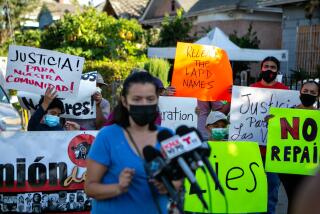From the Archives: Journalists witness Nevada A-bomb tests
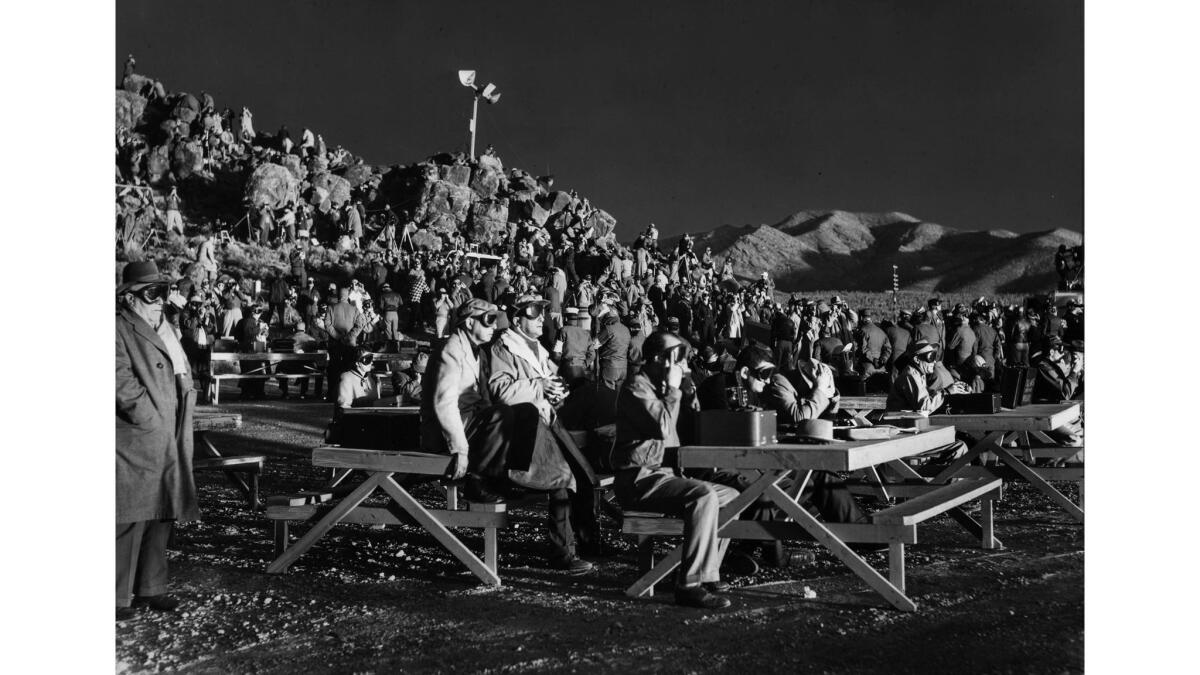
Established in 1951, the Nevada Test Site is located in southeastern Nye County about 65 miles northwest of Las Vegas. From 1951 until 1962, 100 above-ground nuclear tests were held at the facility. Over 900 underground tests were conducted until 1992.
In the 1950s, journalists were invited by the Atomic Energy Commission to witness some of the test explosions. On March 17, 1953, Los Angeles Times staff writer Gene Sherman joined soldiers in trenches two miles from ground zero for one test. Here are some excerpts from his page one story the next morning:
BY GENE SHERMAN, Times Staff Representative
YUCCA FLAT FORWARD AREA, March 17 – White hell in the heavens burst over us at 5:20 a.m. today but seconds later we peered unharmed from our trenches to prove men are safe less than two miles from an atomic explosion.
The 1000 troops and 20 newsmen who cowered with them in the forward trenches were closer to atomic detonation than any other human being in history, except the Japanese at Hiroshima and Nagasaki.
I was one of the newsmen selected by lot to accompany the soldiers from Camp Desert Rock to the prepared entrenchments in this broad, flat valley where the giant atomic mushrooms grow.
The soldiers with whom I shared a trench were interested but not overwhelming impressed by man’s deadliest miracle. They took the test and their historic proximity to nuclear fury pretty much as standard operating procedure.
The men I was with displayed no extraordinary anxiety beforehand. They laughed and kidded with one another until the very last minute. Then they grew serious enough to take the precautions prescribed by the Atomic Energy Commission.
This was an explosion equivalent to 15,000 tons of TNT, fired from a 300-foot steel tower to simulate an atomic artillery burst.
To those among the observers who never had seen an atomic explosion before, it left them grasping for adjectives. But the detonation left those who had seen others of the 1951 and 1952 test series – albeit at a far greater distance – somewhat disappointed.
Reveille at Camp Desert Rock, jumping-off place for atomic indoctrination, was at midnight.
We managed to snatch about three hours’ sleep following a special briefing. After breakfast we climbed into busses to which we walked on trails marked with flares.
The press bus, discouragingly enough, was No. 30 – “the end” in journalese.
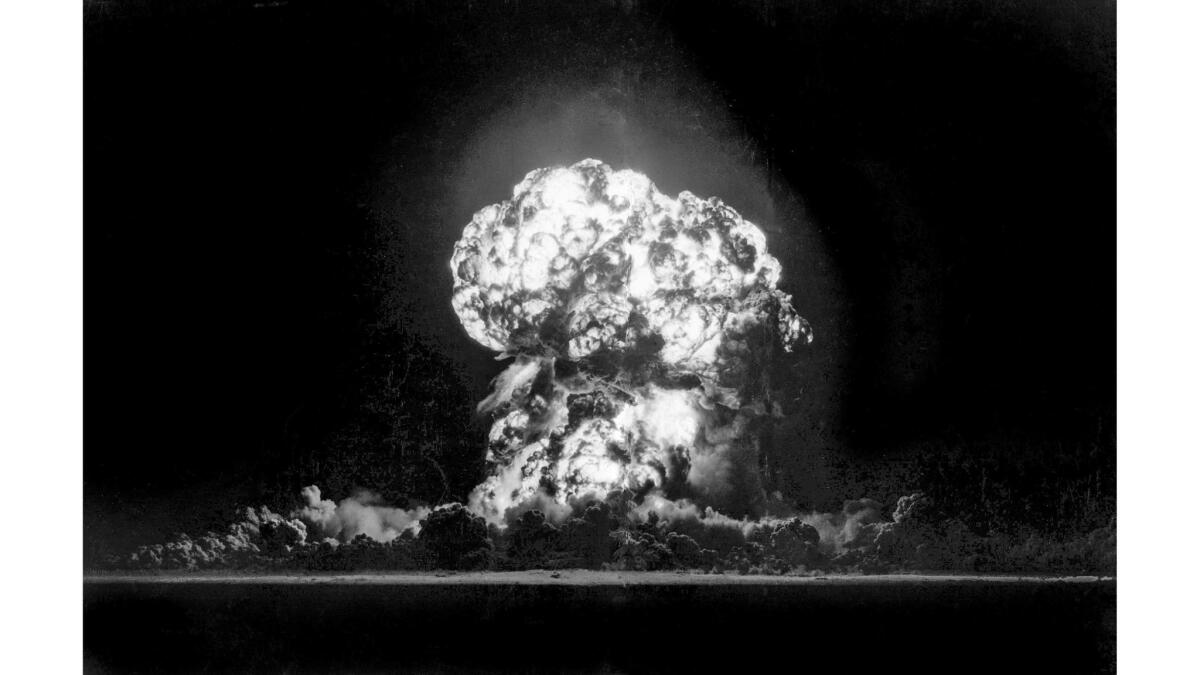
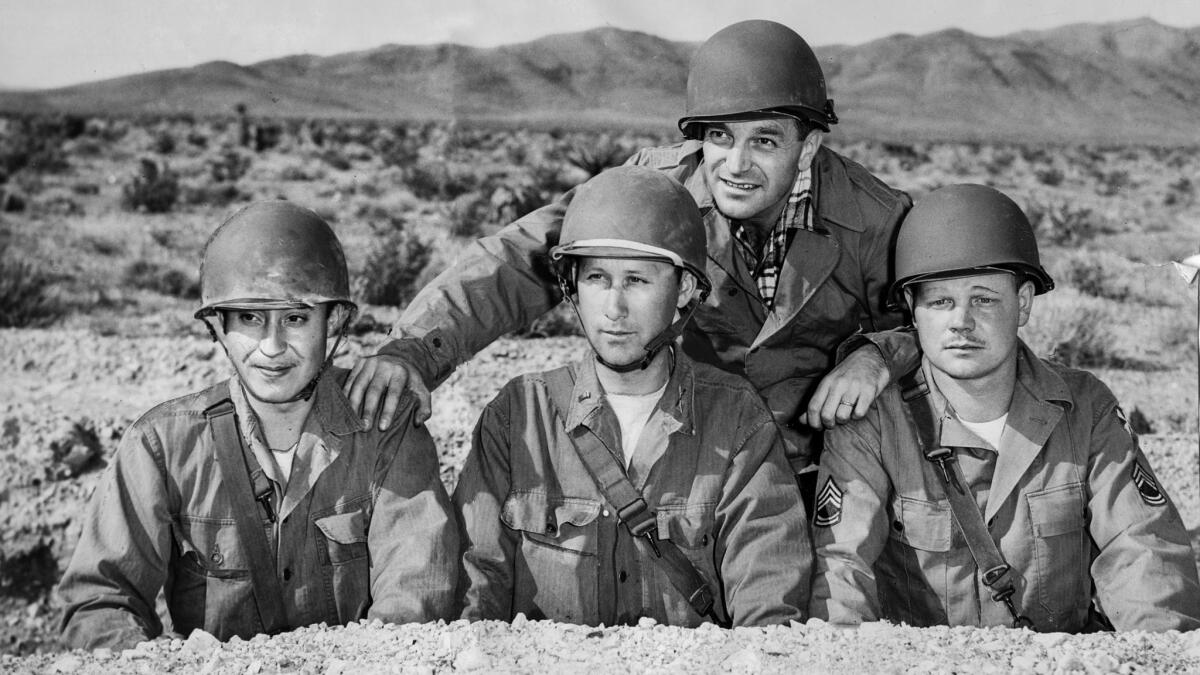
At 2:28 a.m. the long line of vehicles threaded slowly out of the rocky camp into a chill, clear, star-strewn desert night. We wound at an agonizing 20 miles per hour through the barren hills, past News Nob where less lucky observers would witness the blast.
Finally we turned east off the main Nevada Proving Ground road to a parking area. From there we were guided to the entrancement area by white tape and flares laid along the ground. …
At H-hour minus 60 minutes 2500 points of T.N.T. was exploded to verify the delicate calibrations utilized in evaluating atomic experiments. All unnecessary electrical equipment was ordered off at H minus 30.
Three instrumentation B-29s droned purposefully over the target. Then the word came down over the loud-speakers:
“This is H minus 5. The mushroom cloud will be at an altitude of approximately 40,000 feet eight minutes after the detonation.” …
From the loud-speakers came Capt. Harold Kinne’s level voice in comments:
“You gentlemen are privileged to be closer than any of our troops have ever been – closer than any American troops in history. This is the first time you may get hurt if you don’t obey orders.
“Two miles is mighty close. Gentlemen, this is the greatest show on earth. Relax and enjoy it.”
He told us what to do and as the public-address system marked H-minus-3 we did it. We knelt down in the fine dust in the bottom of the trench. We put our helmeted heads low. We leaned hard against the forward wall to brace ourselves for the shock. …
Then instantaneously it came as the countdown reached zero. The murky dawn light was suddenly gone from our trench, washed out by the indefinable, unbelievable grievance of the atomic flash.
Under my nose the dull powered sand of the trench turned an unworldly white that seemed to typify the total absence of all life.
Simultaneously the earth we embraced so dependently convulsed in violent paroxysm. We were shaken like dice in a cup for brief, fleeting moments of terror.
Still hugging the protective earth we heard what seemed like the crack of a gargantuan whip above us, then the angry, protesting echoes of dying fission.
With it we expected heat, but little if any touched us in the trenches.
In a fantastic fraction of a minute it was over, and the earth had ceased shuddering. …
After the explosion, Sherman reported that the soldiers and journalists “approached within 300 yards of the spot over which the burst occurred before our escort’s measuring instrument indicated questionable radiation. At that point we turned back.”
Los Angeles Times photographers and writers covered other nuclear tests. On May 5, 1955, Los Angeles Times aviation writer Marvin Miles reported from inside a U.S. Army tank 3,100 yards from a blast.
Other coverage was very simple. For two of the photos below, photographers set up tripods on the Los Angeles Times roof and made images of City Hall backlit by the nuclear blasts 300 miles away in Nevada.
Some of these photographs were used in similar From the Archives posts on March 8, 2012, and Oct. 3, 2013.
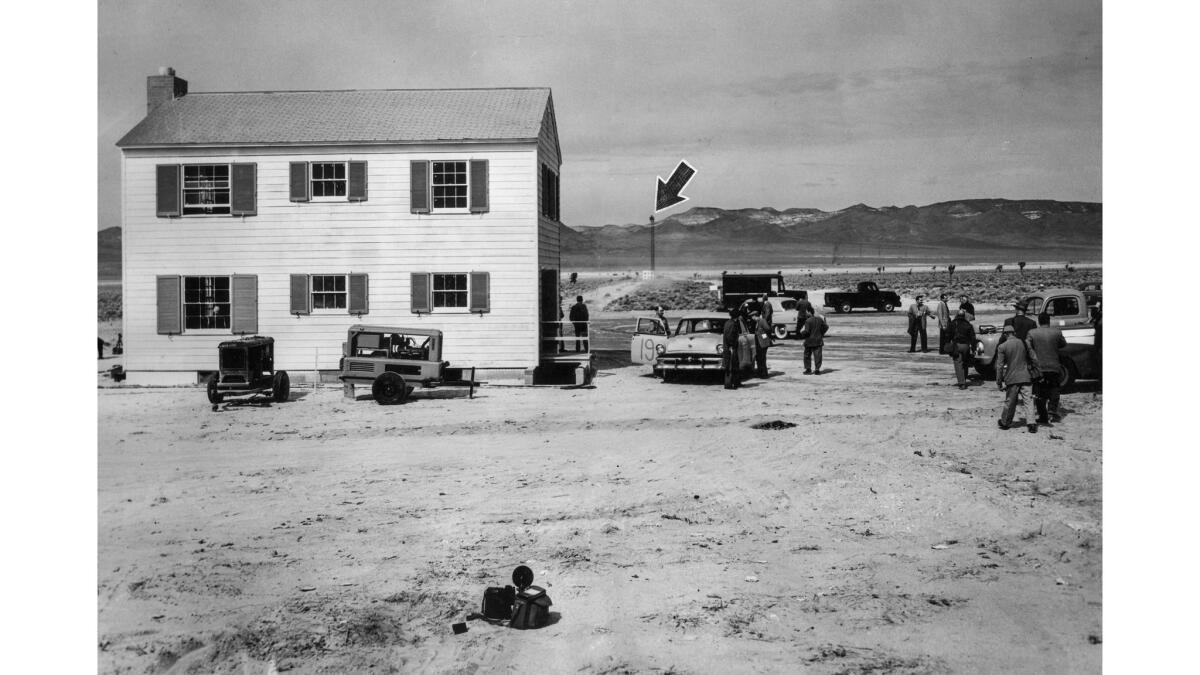
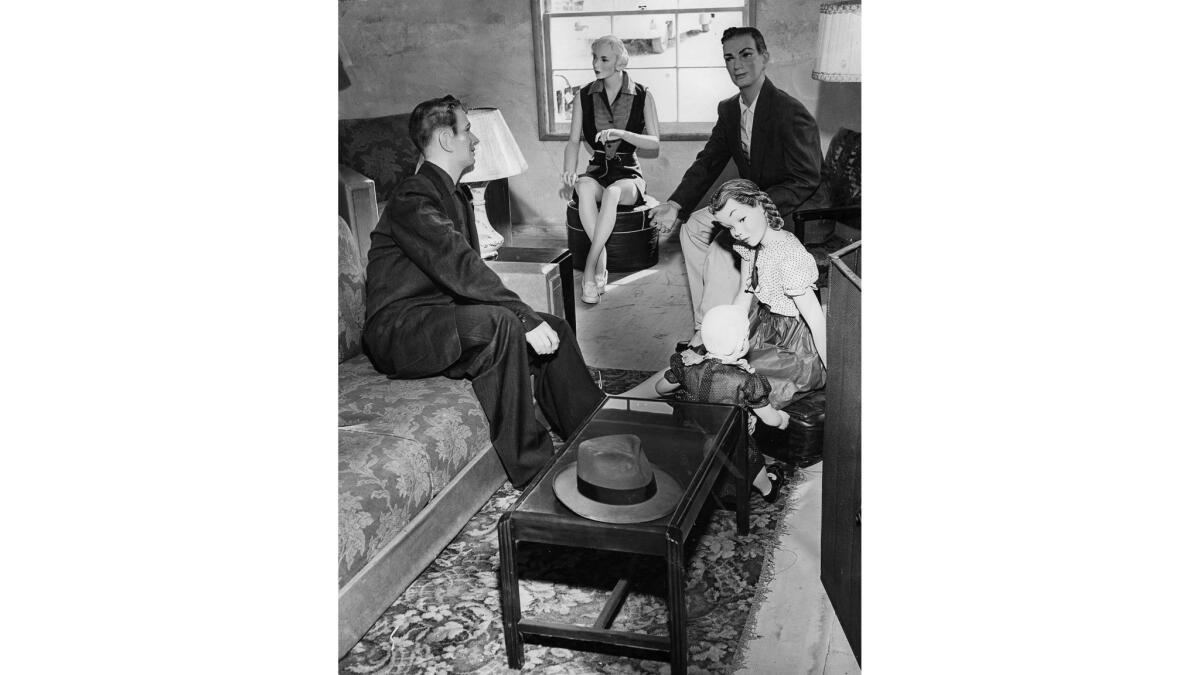
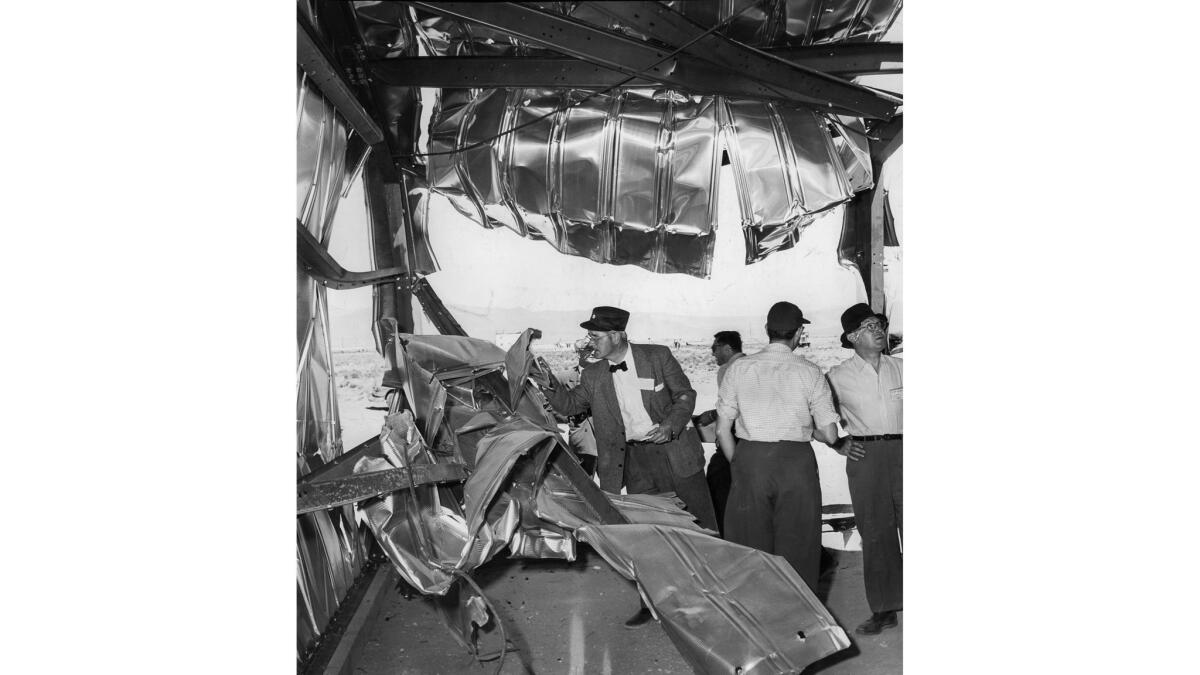
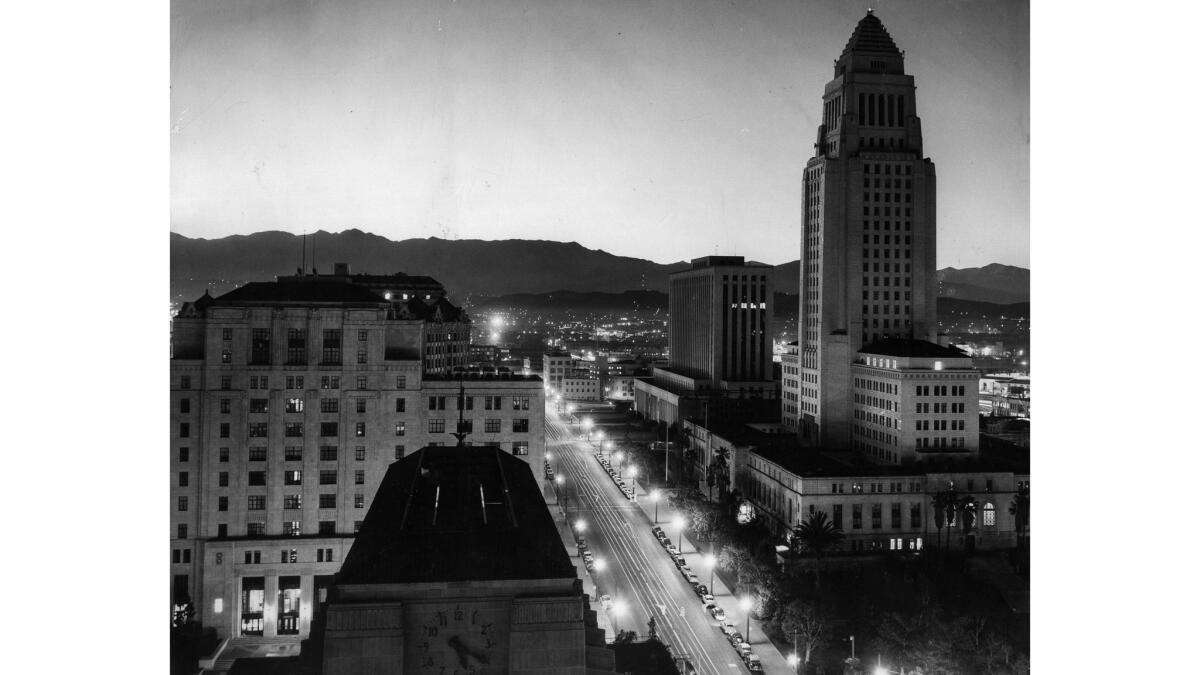
See more from the Los Angeles Times archives here
More to Read
Sign up for Essential California
The most important California stories and recommendations in your inbox every morning.
You may occasionally receive promotional content from the Los Angeles Times.


